The Hibiscus plant is a tropical beauty beloved for its large, vibrant flowers and glossy green foliage. Whether grown as a garden shrub, patio plant, or indoor specimen, Hibiscus can transform any space into a lively, colorful paradise. However, to enjoy its spectacular blooms and healthy growth, proper care is essential.
If you want your Hibiscus to flourish year-round, understanding its needs—from sunlight to watering, feeding to pruning—is key. In this comprehensive guide, we’ll walk you through everything you need to know to care for your Hibiscus plant effectively.
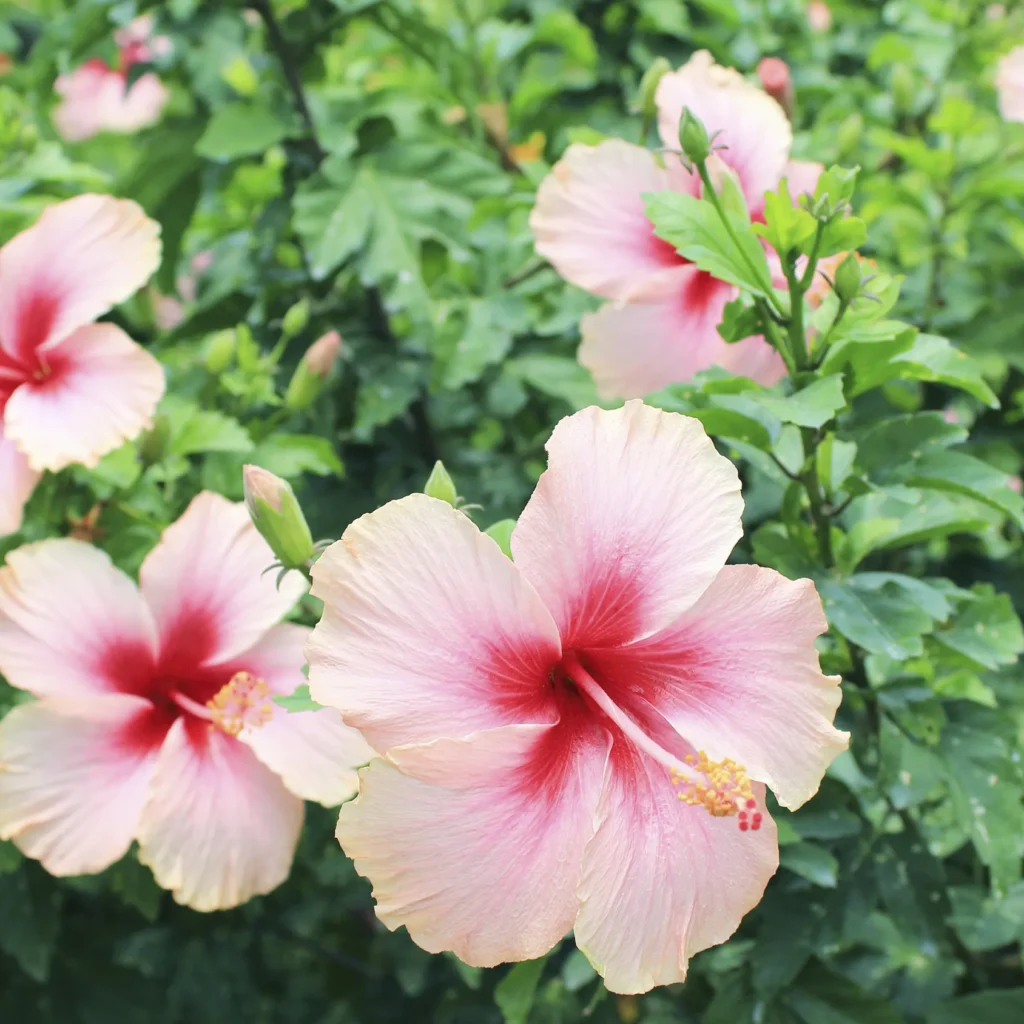
Why Choose a Hibiscus Plant?
Hibiscus plants aren’t just pretty flowers. They offer several benefits that make them a popular choice for gardeners and plant lovers:
- Tropical flair: Large, trumpet-shaped flowers in bold reds, pinks, yellows, and whites.
- Attract pollinators: Bees, butterflies, and hummingbirds love them.
- Medicinal uses: Hibiscus tea is prized for antioxidants and health benefits.
- Versatility: Suitable for containers, garden beds, and indoor growing.
- Long blooming season: With the right care, they flower from spring through fall.
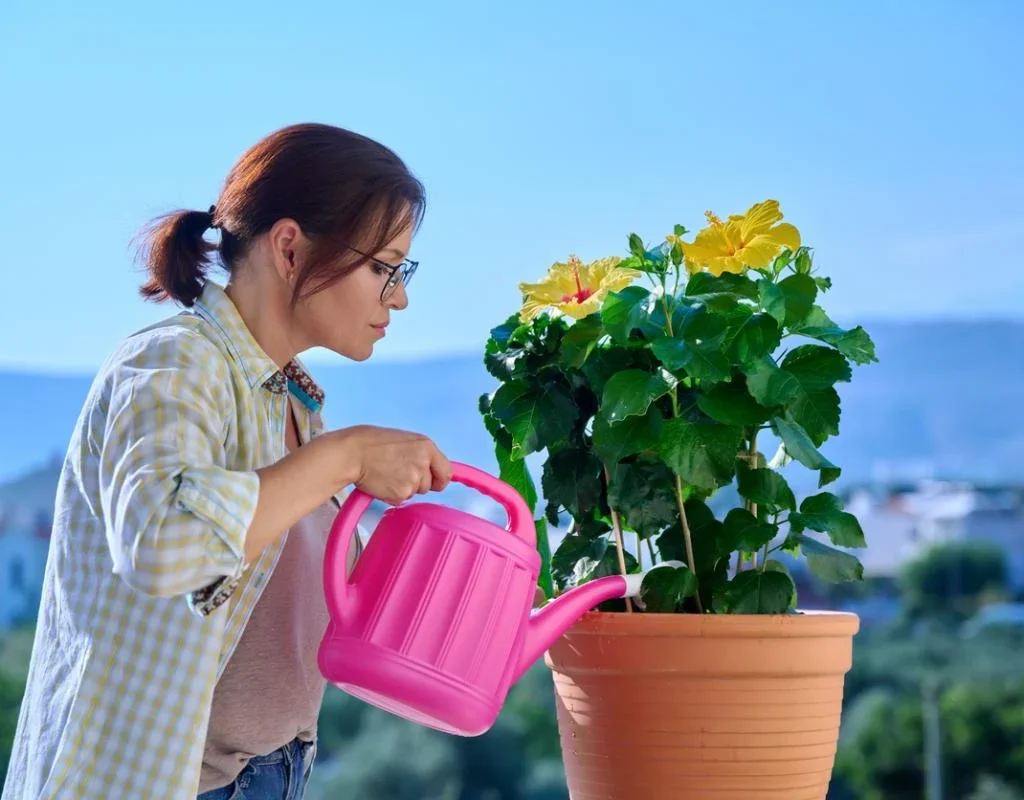
Understanding Hibiscus Plant Types
Before diving into care, it helps to know the most common types:
- Tropical Hibiscus (Hibiscus rosa-sinensis): Popular as a houseplant or patio shrub in warm climates. Needs warm temperatures and humidity.
- Hardy Hibiscus (Hibiscus moscheutos): Can survive colder winters and is grown outdoors in temperate zones. Blooms tend to be larger and more delicate.
- Chinese Hibiscus: Often the same as tropical, known for showy flowers and frequent blooming.
The care guidelines below primarily apply to tropical Hibiscus but can be adapted for hardy varieties with slight modifications.
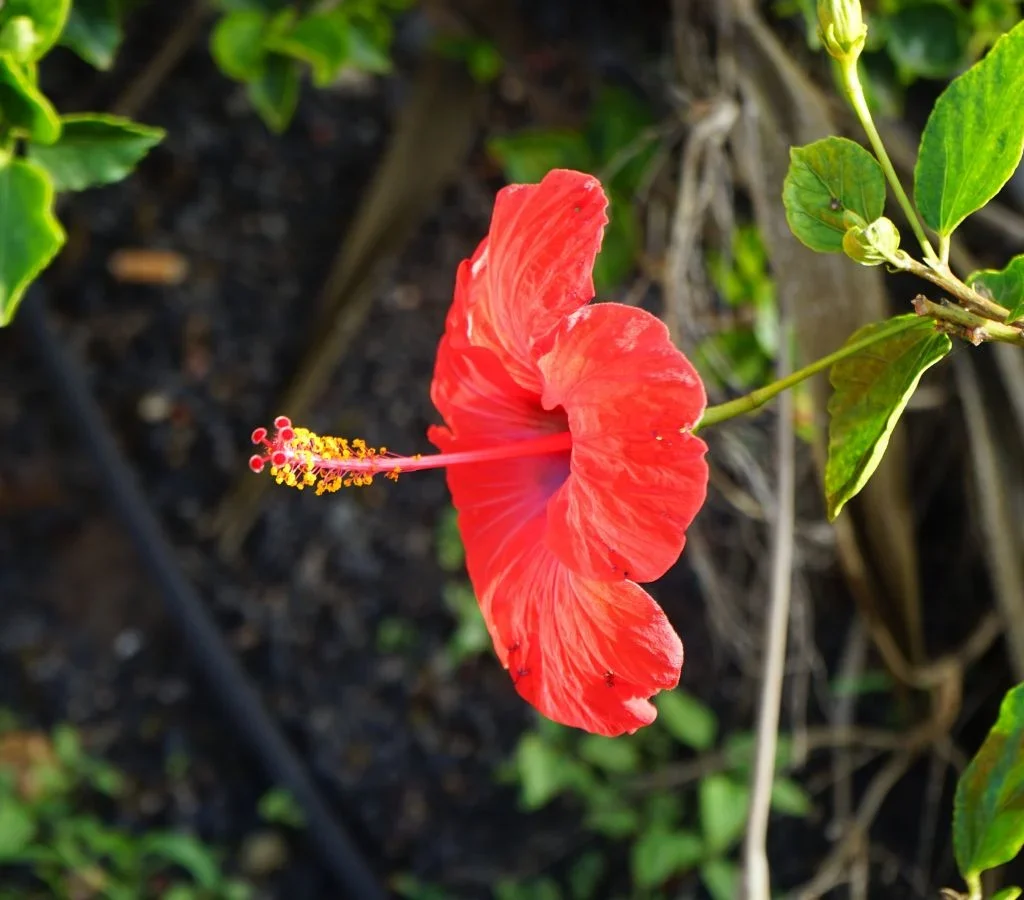
Location and Light: The First Step to Effective Hibiscus Care
Light Requirements
Hibiscus thrives in full sun — at least 6 hours of direct sunlight daily. Adequate light ensures abundant flowering and robust growth.
- Indoors: Place your Hibiscus near a bright, south-facing window.
- Outdoors: Plant in a sunny spot where it receives morning sun and some afternoon shade in very hot climates.
Temperature Preferences
Hibiscus prefers warm temperatures between 60°F and 90°F (15°C–32°C). It doesn’t tolerate frost or prolonged cold well.
- Bring potted Hibiscus indoors if temperatures drop below 50°F (10°C).
- Hardy Hibiscus can withstand cooler temps but thrives best in warmer summer months.
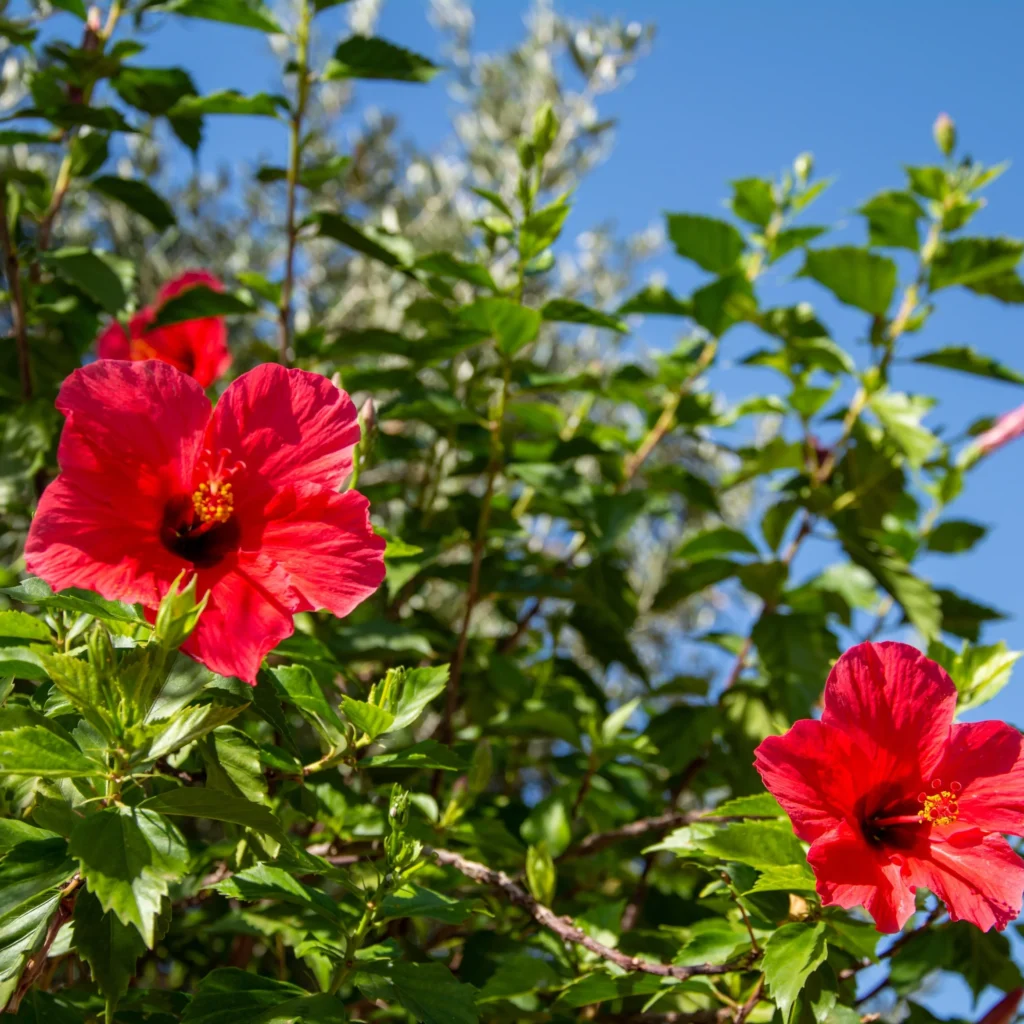
Soil and Potting Mix: The Foundation for Healthy Growth
Hibiscus prefers well-draining, fertile soil rich in organic matter.
Ideal Soil Composition
- Loamy soil mixed with compost or aged manure.
- Slightly acidic to neutral pH (around 6.0–7.0).
- Avoid heavy clay soils that hold too much moisture.
Potting Mix for Container Plants
For potted Hibiscus, use a mix of:
- 2 parts potting soil
- 1 part perlite or coarse sand for drainage
- 1 part compost for nutrients
Watering Hibiscus Properly
Watering is one of the most crucial factors in Hibiscus care.
How Often to Water:
- Hibiscus likes consistent moisture but hates soggy roots.
- Water thoroughly when the top inch of soil feels dry.
- During hot summer months, you may need to water daily if planted outdoors.
- Reduce watering in cooler months or when the plant is dormant.
Watering Tips:
- Avoid waterlogging by ensuring pots have drainage holes.
- Use room-temperature water to avoid shocking the roots.
- Mulch outdoor plants to retain moisture and keep roots cool.
Feeding and Fertilizing Hibiscus
Hibiscus are heavy feeders, especially during active growth and blooming periods.
Fertilizer Type:
- Use a balanced, water-soluble fertilizer with a ratio like 10-10-10 or one higher in potassium (e.g., 10-10-15) to encourage flowers.
- Organic options include fish emulsion, seaweed extract, or compost tea.
Feeding Schedule:
- Fertilize every 2 weeks during spring and summer.
- Stop or reduce feeding in fall and winter when the plant’s growth slows.
Pruning and Deadheading: Boost Bloom Production
Pruning Tips:
- Prune in early spring before new growth begins to maintain shape and encourage branching.
- Remove weak, leggy, or dead stems to improve air circulation and overall health.
- Regular pruning promotes fuller growth and more blooms.
Deadheading:
- Remove spent flowers regularly to encourage more blooms.
- Pinch off the faded flower stem just above a set of healthy leaves.
Managing Pests and Diseases Naturally
Hibiscus can attract common pests and sometimes fall victim to diseases.
Common Pests:
- Aphids
- Spider mites
- Whiteflies
- Mealybugs
Natural Pest Control:
- Spray leaves with insecticidal soap or neem oil.
- Wipe pests off with a damp cloth or blast them off with water.
- Introduce beneficial insects like ladybugs if outdoors.
Disease Prevention:
- Avoid overwatering to prevent root rot and fungal diseases.
- Ensure good airflow around the plant.
- Remove affected leaves promptly.
Repotting and Transplanting Hibiscus
- Repot container plants every 2-3 years or when roots become crowded.
- Choose a pot slightly larger than the current one with good drainage.
- Repot in spring for best results.
- For garden plants, transplant during early spring or fall.
Special Tips for Indoor Hibiscus Care
- Keep humidity levels moderate by misting leaves or using a humidity tray.
- Rotate the plant regularly to ensure even light exposure.
- Avoid drafts and sudden temperature changes.
Encouraging Year-Round Blooms
Hibiscus can bloom multiple times a year with proper care.
- Provide consistent sunlight and warmth.
- Feed regularly during growth.
- Deadhead and prune to stimulate new growth.
- Avoid stressors like overwatering, underwatering, or sudden temperature shifts.
Troubleshooting Common Problems
Leaves Yellowing
- Could indicate overwatering, poor drainage, or nutrient deficiency.
Flower Buds Dropping
- Usually caused by sudden temperature changes, lack of humidity, or inconsistent watering.
Leggy Growth
- Insufficient light or lack of pruning.
Conclusion
The Hibiscus plant is a stunning, rewarding plant that brings tropical beauty to any space. By providing plenty of light, warm temperatures, well-draining soil, consistent watering, and regular feeding, you’ll encourage healthy growth and spectacular blooms. Pruning and pest management will keep your Hibiscus thriving season after season.
With the right care approach, your Hibiscus can become a vibrant centerpiece, bursting with colorful flowers that delight you and attract pollinators. Whether you’re a beginner or experienced gardener, this guide will help you care for your Hibiscus plant effectively and enjoy its natural beauty for years to come.

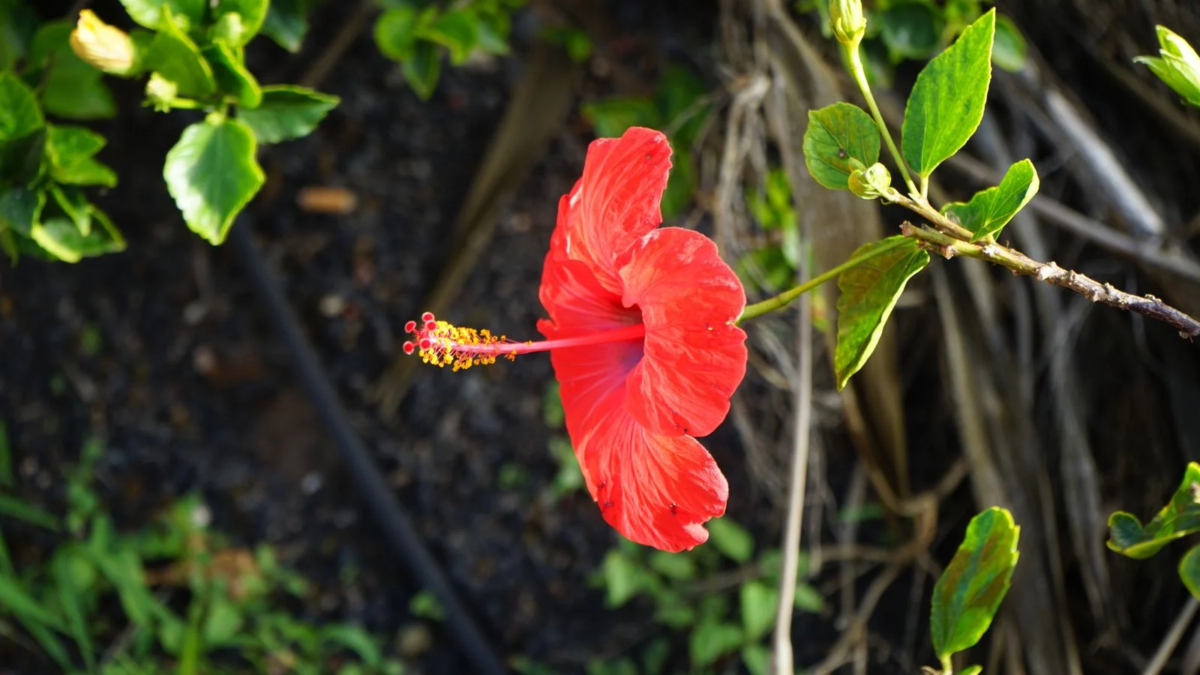




Leave A Comment